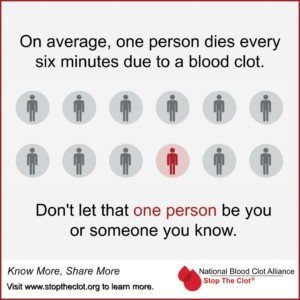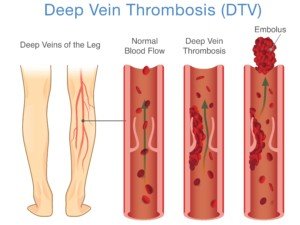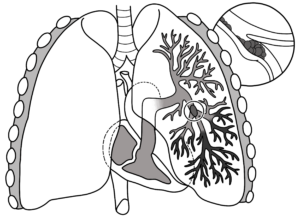
The common-held belief among physicians is that pulmonary embolism is always from a DVT, a blood clot that forms in the legs or pelvis.
The DVT may break away and end up in a lung, causing the potential to kill a person.
The belief, then, has been that pulmonary embolism and deep vein thrombosis should coexist in the majority of patients, since, allegedly, only part of the blood clot in the leg breaks away, rather than the entire clot.
A report in Archives of Surgery says something very interesting.
The report concerns a study involving 247 trauma patients who had scans done of their lungs, legs and pelvis.
Forty-six of these patients had pulmonary embolus. And 18 percent had deep vein thrombosis.
However, seven of the patients had both pulmonary embolus and deep vein thrombosis.
Were there differences between patients with pulmonary embolus plus deep vein thrombosis, and patients with PE without deep vein thrombosis? No.
The study authors concluded that there is little evidence that pulmonary emboli always come from a DVT of the peripheral veins.
Cadaver studies have shown that usually, only part of the blood clot dislodges and travels elsewhere. The study authors further state that many pulmonary emboli indeed form in the lungs.
Where are all the places in the body a deep vein thrombosis may form?
“DVT is the general term, meaning a thrombus in any deep vein including the veins in the lungs,” says Steve Elias, MD, FACS, a vein specialist with Englewood Health in NJ.

Shutterstock/solar22
“DVT in the legs is the most likely source, but DVTs in unusual places such as the lung, ovarian veins, veins in the brain, etc., should make the doctor more suspicious for an underlying cause: cancer, clotting problems.”
Every year in the U.S., 100,000 to 180,000 people die from a pulmonary embolism.
Every year, 600,000 Americans are hospitalized for a pulmonary embolism!

Pulmonary embolism
Symptoms include sharp pain in the chest, difficulty breathing, shortness of breath and coughing up blood.

 Dr. Elias
Dr. Elias 









